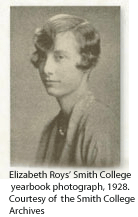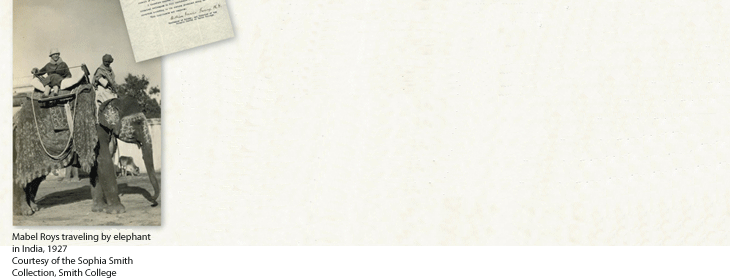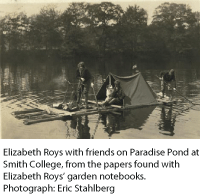
Although Elizabeth Roys and her mother
Mabel Roys were traveling companions, each had a very different focus during the 1926-27 Asian Expedition. While Mabel visited Presbyterian Missions and attended meetings, Elizabeth explored gardens in Japan, Korea, China, Siam, and India. She often spent an entire day in a single garden, photographing it in the changing light.
Elizabeth Roys had a keen love for plants- particularly trees- and her mother's letters home describe her daughter's delight in collecting information for a "paper" on Asian gardens. Armed with letters of introduction from Smith College President William A. Neilson and Smith Botanic Garden Director William E Ganong, Roys embarked on a journey that would unite the continent of her birth with her passion for botany and gardens. Her Smith transcript notes that she "did a piece of work planned out by our Dept. of Botany," which allowed her to continue working on her degree during her absence.
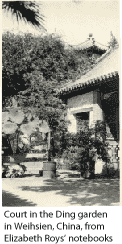

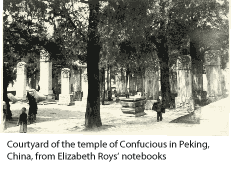
When she graduated from Smith in 1928, Elizabeth Roys sought to enroll in the Yale School of Forestry but was denied admission because of her sex. Yet she later worked at Yale as a research assistant, cataloguing Asian trees. In 1932, she married Nash Williams, and the two settled in Madison, Wisconsin. Although she became a homemaker after her marriage, Betty Williams, as her friends knew her, worked tirelessly to support Madison gardens for the rest of her life. Betty died in 1991, but her cherished notebooks were not discovered until after her husband's death in 2002, when they were donated to the Botanic Garden at Smith College.
In the end, Elizabeth Roys' study of gardens is more exceptional because of her family's missionary work. It was the personal contacts— from provincial doctors to obscure aristocrats to the King and Queen of Siam— stemming directly from her parents' long years of service that allowed the Roys access to gardens that few others were able to enter. Thanks to Elizabeth Roys' loving documentation and reverance for the Asian landscape, we are able to visit these gardens today through the pages of her notebooks.

